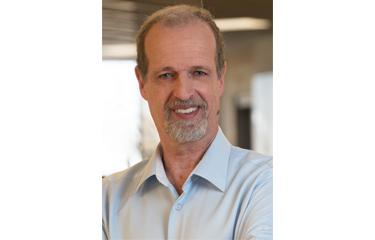David Hazut became a partner and CEO of Rosh Haayin, Israel-based AquaMaof Aquaculture Technologies in 2010. Since then, the company has grown to become a leading supplier of recirculating aquaculture system (RAS) technology, closing more than USD 360 million (EUR 329.9 million) in deals involving work on 10 facilities worldwide as of May 2019.
In 2015, all United Nations member-states agreed to 17 global goals, officially known as the Sustainable Development Goals (SDGs). These goals serve as a call for action aimed at ending poverty, fighting inequality, and addressing the urgency of climate change by 2030.
The SDGs are part of a broader global movement encouraging all industries – including aquaculture – to adopt more sustainable practices. Within the aquaculture industry, RAS technology enables the most sustainable, safe, controlled, and traceable environment for the production of fish and seafood. It creates an environmental-conscience platform that can propel the entire seafood industry toward achieving these important goals, and this is how:
The U.N. acknowledges the basic fact that clean, accessible water is an essential resource. Without it, nothing can exist on earth. Goal 6, for instance, promotes the importance of clean water and sanitation and calls everyone to avoid wasting water. It points to the importance of carefully managing our water resources as a key feature of a sustainable future for the planet. AquaMaof's minimal liquid discharge (MLD) technology utilizes several water treatment patents and filtering techniques to significantly cut down on water consumption, continuously reusing almost 100 percent of the water used in the RAS system in which it is implemented. In an AquaMaof RAS facility, water is constantly purified and recycled. Strict biosecurity protocols are implemented, minimizing the need for antibiotics and vaccinations of the fish being grown.
Producing fresh and natural fish with no added antibiotics or chemicals also addresses Goal 3, related to good health and well-being, which is essential to sustainable development. Fish and shellfish produced using RAS technology provide many health benefits, including omega-3 fatty acids considered essential for human health, without the presence of microplastics. Streamlined production ensures complete traceability of every fish produced.
Goal 14, related to life below water, highlights the importance of conserving and sustainably using the oceans, seas, and marine resources. Moreover, according to a 2018 report from the U.N., global fish stocks are exploited or depleted, with one-third of the world’s oceans overfished and fish consumption becoming unsustainable. Overfishing is already affecting developing regions, where people are struggling to find nutritious sources of food. RAS technology enables the land-based production of fish and seafood, while easing the burden off the oceans as the worlds’ primary resource of seafood. A greater number of consumed fish being produced on land will enable the currently depleting fish populations, as well as their ecosystems, to replenish.
Addressing the importance of the efficient management of energy, Goal 7 promotes sustainable and clean energy consumption practices. AquaMaof’s RAS technology harnesses physical elements in order to reduce the need for mechanical parts, resulting in significantly reduced power consumption (as well as power-related costs). AquaMaof’s advanced monitoring and control system enables the smart management of power, promoting even more efficient power consumption of the facility.
Goal 13 addresses climate change, caused by greenhouse gas emissions. Climate change is now affecting every country on every continent. Weather patterns are changing, sea levels are rising, weather events are becoming more extreme, and greenhouse gas emissions are now at their highest levels in history. By 2050, it’s projected that 68 percent of the world’s population will live in urban areas, an increase from 54 percent in 2016. Fish and shellfish can be produced by RAS technology close to large marketplaces or urban areas. This dramatically shortens the airmiles involved and greatly increases the shelf-life of the product. Less transportation will reduce CO2 emissions in the forthcoming decades.
Goal 9 addresses industry, innovation, and infrastructure. It calls upon the international community to build resilient infrastructure, promote sustainable industrialization, and foster innovation. RAS technology is an innovative technology offering a solid infrastructure that enables the local commercial production of seafood, with complete control and traceability, while promoting the now-more-than-ever important value of aquatic food safety and security. AquaMaof’s RAS technology allows for scalable, flexible design, adaptation to different requirements, and integration of new technologies as they become available. RAS facilities require minimal maintenance, while optimized feeding modes and advanced feeding management systems enable a reduction of the feed conversion ratio (FCR) and operational costs. Consequently, RAS facilities also meet Goal 12, related to responsible production and consumption.
Lastly, Goal 2, of zero hunger, calls upon the international community to “rethink how we grow, share and consume our food.” RAS facilities, which are strategically located next to big cities, provide an ideal solution for local production of fish and seafood. Today, the global supply of fish and seafood doesn’t meet demand - causing prices to rise. With RAS facilities, supply could be met, resulting in greater price stability, making fresh, nutritional, and healthy fish and seafood accessible and affordable to all.
The SDGs are a part of a massive global movement towards a more sustainable world, covering all aspects of our lives. All industries across the board have been adopting sustainable practices – and to that end, aquaculture is no exception. Dozens of RAS facilities underway worldwide prove that the seafood industry, as well as the financial community, are acknowledging the many environmental and social benefits of this technology. I would like to take this opportunity and call for more governments, private funds, and banks to get involved in these projects, and more actively support RAS’ important role as a sustainable aquaculture discipline.
Photo courtesy of AquaMaof






